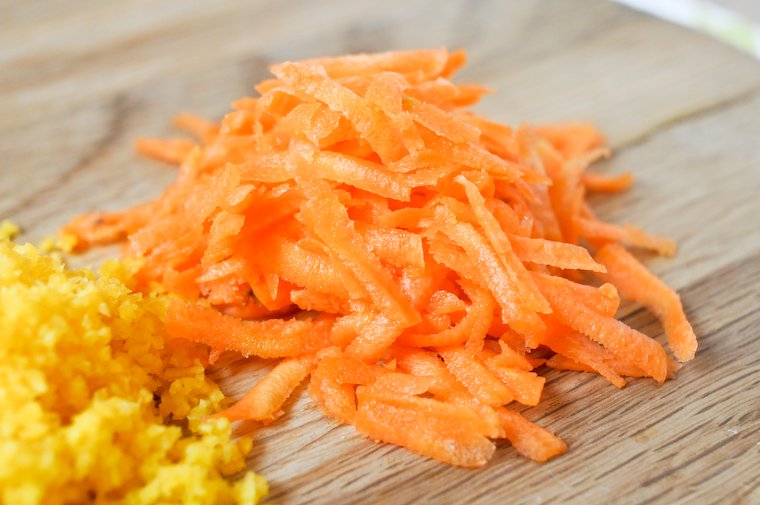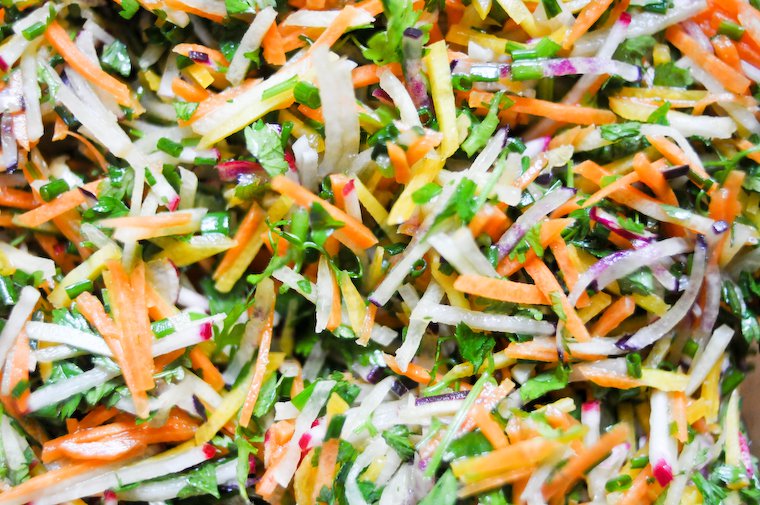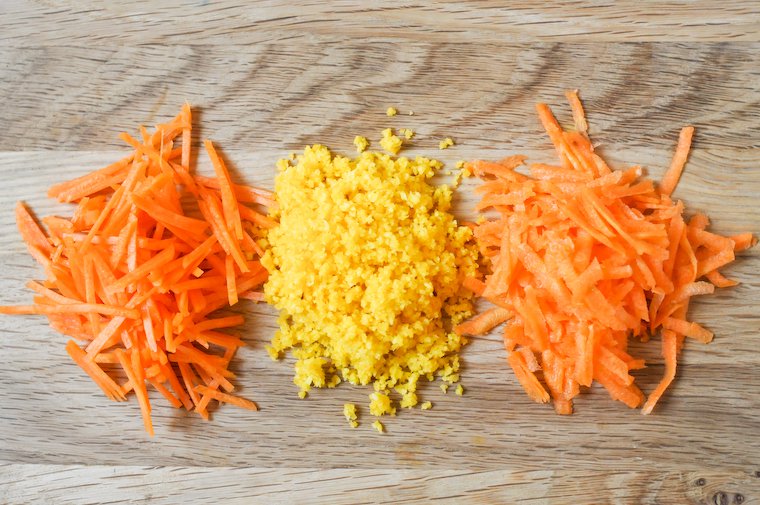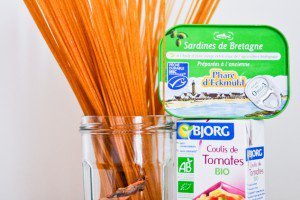We seem to have skipped spring altogether to jump directly into the thick of summer. And with the near-canicule* temperatures we’ve been experiencing, our menus have been all about cold foods and crudités.
I’ve long been a fan of grated carrot salads — when I was a child, this was the only way I would eat carrots at all — and I’ve recently become interested in the different ways one can grate the carrots for it.
I seldom use the grating attachment on my food processor; for small quantities, I find it too bothersome to take out, clean and put away.
For a while, I used the large holes of a box grater (such as this one), and was fairly pleased with the results, though the larger, tougher carrots were a bit of a workout, and any carrot that had become limp from too much time in the fridge was a pain to handle**.

Carrots grated with a box grater.
Then one day, I tired of the box grater and moved on to the brute force approach of simply chopping raw carrots in my mini food processor. It’s noisy, but it takes about a minute, and you get a couscous-like texture — coarse or fine, as you prefer — that is quite lovely.

Carrots chopped in the food processor.
But lately, I’ve switched to what is now my preferred method: I use my mandoline slicer with the comb-like blade attachment. This produces super neat little flecks of carrot with a perfect square section, which is not only attractive, but also optimally crunchy.

Carrots cut with a mandoline slicer.
The mandoline slicer I own is the Benriner model I bought in Kappabashi in Tokyo (but is widely available elsewhere). It is cheap, light, compact, and zingingly sharp; I love it. Naturally, you are supposed to use the hand guard at. all. times., but I confess I never do. I just make sure I stay super concentrated as I slice, and I leave the stem on my vegetables as I prep them, so I can use it as a little handle and keep my fingers away from the blade until the very end.
My go-to dressing for grated carrots is an unmeasured mix of olive oil (liberal amounts of it), lemon juice, strong mustard, Tabasco sauce, salt, and freshly ground black pepper. I mix, taste, and adjust. I usually throw in fresh herbs — cilantro and chervil work especially well — and a handful of raisins. I am also likely to add other grated vegetables besides carrots, such as radishes or zucchini.
And the key to a truly juicy carrot salad is to assemble it an hour or two before serving, so the salt can start drawing some of the moisture out of the carrots and into the dressing.
{See also: Grated Carrots and Beets and Grated Carrot Salad with Avocado.}

* Canicule is the French word for a heatwave. It is based on the alternate name of Sirius, the main star in the Grand Chien constellation (Great Dog or Canis Major in English), which rises and sets with the sun during the hottest days of summer. This also explains the English expression “the dog days” of summer.
** When vegetables spend too much time in the vegetable drawer, they eventually go limp and unappealing. If this happens to your carrots (or radishes, asparagus, cucumbers, cauliflower, celery stalks, etc.), soak them for a couple of hours in a bowl of cold water with ice cubes. This will revive their crunch.














